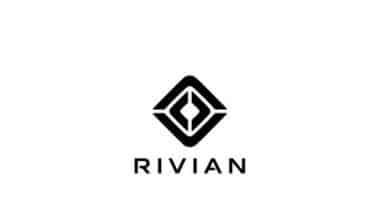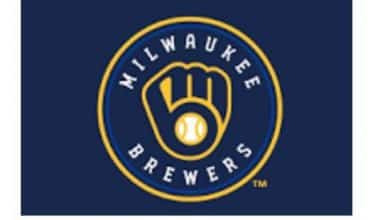Deloitte is a member of the “big four” consulting and auditing firms in the counhtry. Deloitte Touche Tohmatsu Limited is the company’s full name. But let’s take a closer look at one of the most important aspects of a business; its logo. This article will cover the meaning, evolution and history of Deloitte logo.
Evolution of the Deloitte Logo
Following the development of the well-known company, Deloitte, is interesting. Its unique and instructive history starts in London in 1845. The company’s founder, William Welch Deloitte, grew Haskins & Sells and changed the name to Deloitte Haskins & Sells. In 1989, Deloitte overseas, specifically in the United States, adopted the name Touche Ross. In 1989, Deloitte & Touche went through another change. Since 1993, the company has just been called Deloitte. Because the company kept changing its name, it was able to get more customers and make more money. As a result, it was possible to sponsor the Olympics in 2012. According to the most recent data for 2020, a year in which the coronavirus pandemic caused a historic economic disruption, the company made a record-breaking $47.3 million from audit, consultancy, financial operations, taxation, fines, and legal services. The company’s powerhouse was therefore transformed into three sizable businesses owned by a person in the US.
1960 – 1989
The logo at this time was a stretched triangle made of three black ovals. The name Touche Ross was written in bold capital letters along the right side. All elements of the logo were displayed in a black serif font. aesthetically pleasing and reliable, without an overly complicated arrangement of colors and shapes.
1972 – 1989
One thing that makes the logo stand out is that the graphic focus moves to the right. Deloitte thus became the “top floor” and Haskins + Sells the “bottom level.” The bottom line protruded in part, making it clear that the inscriptions were designed to appear like stairs because the bottom was wider than the top. The font also underwent changes, becoming smaller, more geometric, sans serif, and once again black. It makes sense to think that the people who made this logo wanted it to be linked to the growth of the company. catchIt makes sense to think that the people who made this logo wanted it to be linked to the growth of the company.
1989 – 1993
Only four years pass before the modified logo first appears. The new font’s blue hue and the way the words are arranged—Deloitte at the top and & Touche at the bottom—are what first catch your eye. Beautiful accentuation and effective musical arrangement contributed to the brand’s history.
1993 – Present
With the name change, or rather, the shortening of the word “Deloitte,” there was a need for a strong accent. It is the dark dot at the end of the word with the vivid green spot that stands out against the logo’s uniformly black lettering.
The letter D and a green dot make up the logo’s condensed form. It came about because the target audience got used to seeing the full version of the logo. Now, all it takes is seeing two visual symbols for the brand to come to mind strongly.
Why is there a green dot in the Deloitte Logo
There are numerous ways to interpret this symbol. According to the basic meaning, once you are connected to this company, nothing else is necessary. The full stop in this sentence is a metaphor for the conclusion of your quest, regardless of whether you’re a client or an employee.
Josef Kotrba offered a slightly distinct justification. The blog entry stated that the dot meant “We are here.” Think of us.
Deloitte started a campaign in 2016 that featured the dot in several graphic settings. For example, in one of the ads, the dot was shown as the doorknob on an open door.
Deloitte Logo: History of the Deloitte Company
Deloitte provides audit and assurance, consulting, tax, risk, and financial advice to many well-known brands and businesses, including almost 90% of the Fortune 500 and thousands of private and middle-market businesses. Deloitte is a member of the Big 4 firms, which are the largest professional firms and also include PwC, EY, and KPMG. Unlike the MBB firms, which only do strategy consulting, these firms offer a wider range of services, from strategy to implementation to evaluation.
Deloitte is one of the world’s largest companies, with over 300,000 employees and global aggregate sales of $50.2 billion USD. strategic growth offerings. To facilitate more decentralized management, Deloitte has been split into smaller companies. Dan Helfrich is the leader of Deloitte Consulting LLP, which has over 70,000 employees and a strategy consulting division. In addition to core strategic growth offerings (Cloud, AI, and Cyber), innovation & platforms, alliances and ecosystems, and offering portfolios, industries, and competency areas, Deloitte Consulting LLP is organized.
Deloitte’s consulting division offers different career paths that focus on each of their services in each of their fields. Depending on what you want to do, you can choose to specialize as an actuarial analyst, a junior developer, a business transformation analyst, a strategy and M&A analyst, or a design analyst.
They focus a lot on understanding their clients’ goals and helping them achieve them as they work on services that are meant to change the future of cities, work, mobility, and business.
Deloitte Logo: The Success Story
In 1840s
During the Industrial Revolution, a new type of company was born that raised money by selling shares to the public. The first office of the firm was opened in London in 1845. It was started by William Welch Deloitte, who in 1849 audited the famous Great Western Railway and became the first independent auditor of a public company. The boom in “joint stock companies” at the time “created a demand for people who could understand and solve complex business problems.” “The results and the experience were so important that GWR directors pushed for mandatory independent control,” and this was done, first in England and then in the rest of the world.
1890s
In 1890, Deloitte opened a branch office on Wall Street. Edward Adams and P.D. Griffiths ran the office. Haskins & Sells was started in New York in 1896 by Charles Waldo Haskins and Elijah Watt Sells. They did this after making suggestions to the US government that were used and saved the government $600,000 a year while also making work conditions better. Later, Haskins & Sells opened new offices in Chicago and London, which helped the accounting field move forward.
1900s
With less than 500 CPA, George Touche opened an office in London in 1898, and in 1900, he joined John Ballantine Niven in founding the firm of Touche Niven in the Johnston Building at 30 Broad Street in New York. However, with the advent of the “new era of income tax,” this firm will quickly expand exponentially. In 1913, the 16th Amendment to the US Constitution made it possible for the first time for US citizens to be taxed on their income. This was a big deal for public accountants.
1930s
People started to pay attention to independent auditing after the stock market crash of 1929 and the economic depression that followed. “It became clear that proper accounting practices would have prevented some bankruptcies and, as a result, unemployment,” says the Independent Auditing Organization. So, on March 1, 1933, “Colonel Arthur Hazelton Carter, President of the New York State Society of Certified Public Accountants and managing partner of Haskins & Sells, testified before the U.S. Senate Committee on Banking and Currency,” helping to convince Congress to make independent audits of publicly traded companies mandatory. 84 years have passed since William Welch Delloitte performed the first public audit.
1940s
The US experienced a remarkable economic expansion following World War II. In this situation, a series of mergers and acquisitions took place within the company to create the forerunner of what is now known as Deloitte. First, they merged with Touche Niven and A. R. Smart in 1948, just one year after George Bailey, the president of the American Institute of Certified Public Accountants at the time, established his own business. This led to the formation of Touche, Niven, Bailey, and Smart, which in 1969 changed its name to Touche Ross.
Haskins & Sells, on the other hand, “went through its own huge growth” by combining with 26 domestic organizations and opening offices in Canada, Central and South America, Europe, and Japan.
1950-1970
Information technology has become more important in business and everyday life over the past 10 years. This has had a huge effect on the accounting field. monitoring technologies to improve the way clients are handled with the aid of data processing devices. Since Touche Ross was the first company to automate its bookkeeping in 1952, it was the main rival in this reaAss, as a result of its work with statistical sampling. The MC section of the company, which offered guidance on computer systems, wasampling, The technological revolution had the most impact on the part of the company called MC that gave advice on computer systems. ion.
1970-1990
In 1972, Haskins & Sells and Deloitte joined forces in London to form Deloitte Haskins & Sells. Both companies were growing at the same time. Meanwhile, the Japanese company Tohmatsu Aoki & Co. merged with Touche Ross in 1975. In 1989, J. Michael Cook and Edward A. Kangas finally brought the two businesses together and ran them as one. Even though some of the member firms on both sides said no to the merger, one of the largest accounting firms in the world was formed.
1990s
The organization faced bigger and more varied problems as a result of the information revolution and globalization. The organization’s clients demanded increasingly integrated cross-border solutions as a result of the fall of the Berlin Wall, the emergence of trading blocs like the European Economic Community, the rise in economic power of the Pacific Rim, and the expansion of cross-border trade thanks to agreements like NAFTA.
The partners of Deloitte & Touche agreed to establish a department called Deloitte & Touche Consulting Group (now known as Deloitte Consulting) in 1995 to cater to the needs of its clients who needed worldwide solutions. To do this, they had to bring together skills from all different fields and countries. They were able to do this by choosing the best candidates and giving them the training they needed to succeed.
2000 – the Present
Deloitte was split up between 2003 and 2005 into the following subsidiaries: Deloitte Tax LLP, Deloitte & Touche LLP, Deloitte Consulting LLP, and Deloitte Financial Advisory Services LLP. The goal of Deloitte is to “provide high-quality services to today’s leading companies—and by continuously developing to better meet the demands of both its customers and society.”
As Haskins stated more than a century ago, “the soundness of the world’s affairs is the subject of our study and interest.” To “simplify work so that it can be done faster and more effectively” remains our mission. Deloitte USA
Deloitte Branding Techniques
#1. Deloitte’s Product Strategy
One of the top consulting companies in the world is Deloitte. Deloitte offers consulting services in the areas of financial advisory and auditing, risk advisory, tax, and legal assistance. Offering goods and services would help Deloitte’s marketing strategy get off to a good start.
They offer both internal audits and conventional accounting and auditing services. Deloitte offers consulting services in areas such as enterprise applications, integrating new ideas, strategy and operations, human capital, outsourcing, and more.
The Different Products and Services
Deloitte also provides its clients with financial services like project guidance, valuation services, forensics, e-discovery, report review, record review, consulting, and both personal and business bankruptcy.
The organization handles risk management as well as portfolio analysis for the customers that are given priority.
Risk management, information security and privacy, data quality and project risk, and business progress management are all handled by Deloitte.
They help with the transfer pricing and international tax activities of multinational corporations. They also run the tax computer infrastructure and give tax advice on different business decisions.
#2. The Pricing Plan
Deloitte charges exorbitant prices for the goods and services it provides. Being a leading MNC, Deloitte’s services are found to be widespread worldwide. The marketing blend price technique The methodology used by Deloitte is based on factors such as the amount of labor needed, the location, and other factors.
They have high expectations for the quality of services they provide to clients and customers. Deloitte will charge a lot for the goods, but they are picky about the level of service excellence. Since the market is competitive, we can see that customers are very picky about the quality of the services that businesses offer.
Another thing that customers think about when choosing a business is how many services it has to offer. Deloitte offers a wide range of services, and the prices for each vary depending on the locations where the services are provided.
Compared to local and national services, foreign services have higher fees.
#3. The Distribution Plan
Deloitte was founded in an area that was once governed by national borders. The firm first started growing within Europe before progressively branching out to other nations.
Customers can use Deloitte’s services anywhere in the world, but they have to pay more to do so. The company has grown to about 150 countries and offers many different services.
Deloitte is currently broadening its horizons and providing consulting and services to major MNCs. We discover that the company has spread to practically every continent.
Thanks to Deloitte’s services and network, the world is now smaller and more interconnected.
#4. Advertising Plan
Deloitte is receiving widespread advertising. They believe that the quality of the services they provide will help to promote the business. This is a very strong marketing tactic in their arsenal.
Deloitte also advertises through print media such as publications, billboards, websites, and campus interfaces.
They are a company that understands that if you provide the necessary caliber of services, there is no need for promotion at that time. With this method, Deloitte has successfully crossed international borders and dominated the worldwide marketplaces.
They are doing well with the brand’s services and have been able to reach people all over the world.
Deloitte has also planned CSR projects to make sure the services they offer to the public are good and to promote those services without meaning to.
Deloitte Logo: Colours
Even though the logo is mostly black and white, the green is without a doubt the most noticeable color. There is a reason why the calming, natural shade was chosen. The corporate spokesman claimed that the color green was selected as a representation of safety. It’s meant to show that if you hire Deloitte or become a client, your project or career will be in good hands.
Deloitte Logo: Font
The font used on the Deloitte logo resembles Mediator Narrow Extra Bold a lot. In 2016, the Para Type foundry made a family of modern sans serif fonts called Mediator. With the help of Alexander Lubovenko, Manvel Shmavonyan created the typeface family.
The Deloitte Symbol
There are numerous ways to interpret this symbol. According to the basic meaning, once you are connected to this company, nothing else is necessary. The full stop in this sentence is a metaphor for the conclusion of your quest, regardless of whether you’re a client or an employee.
Josef Kotrba offered a slightly distinct justification. The blog entry stated that the dot meant “We are here.” Think of us.
Deloitte started a campaign in 2016 that featured the dot in several graphic settings. In one of the ads, for example, the dot was shown as the doorknob on an open door.
Who Created the Deloitte Logo
In 1960, the company Touché Ross, which is now called Deloitte, asked for the logo to be made. Three On a black and white badge, the stylized triangle was to the left of the wordmark, which was printed in title case and a bold serif font. Three stylised black petals that together form a white triangle in the emblem’s empty space.
A makeover was held in 1972 after the company’s name was changed to Deloitte Haskins and Sells. The logo’s graphical insignia was gone, and the typography was now divided into two levels, with “Deloitte” placed above “Haskins+Sells.” The whole inscription was written in all capital letters in a strong, clean sans-serif font with slightly narrowed lines. Black on white continued to be the dominant color scheme.
In 1989, the business changed its name to Deloitte & Touche, and as a result, a new logo was created. This time, the business adopted a new typeface and a blue and white color scheme. The full-shaped outlines of the title case sans-serif font made it look stable and sure, making the business look reliable and professional.
Since 1993, the business has been called Deloitte and has used a simple, but easily recognizable, logo. It is a unique sans-serif wordmark in bold title case with parts of the corners cut diagonally. Next to the writing is a solid lime-green dot, which stands for growth, wealth, and progress and makes the black logotype stand out.
Conclusion
The simplicity and welcoming appearance of the Deloitte logo show how far the company has come. It has achieved the top spot in the rankings since its start, Deloitte, one of the top consulting firms, is also one of the best places to work.
With time, it has created new goods and services and made adjustments to meet market demands. The brand has stood the test of time, outperformed its competitors in the market, and gained recognition.
Deloitte Logo: Related Articles
- PUBLIC ACCOUNTING FIRMS: The Ultimate List in 2023(
- Technology Consultant: Overview of Top 10 Technology Consulting Companies
- TOP ACCOUNTING FIRMS: 35+ Best in the World (Updated!!!)
- PUBLIC ACCOUNTING: What is Public Accounting (+ Detailed Salary Structure)
- DOT REGULATIONS: Meaning, What You Should Know & New Regulations






